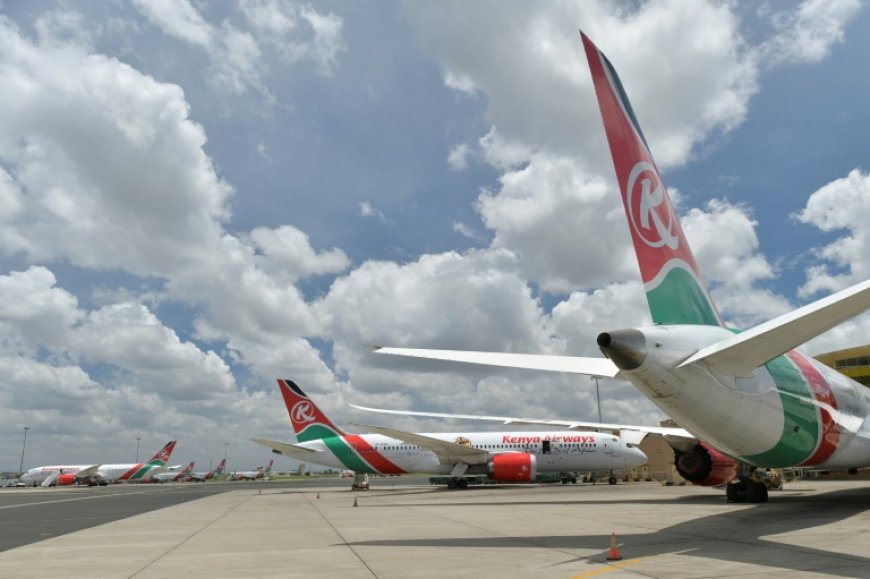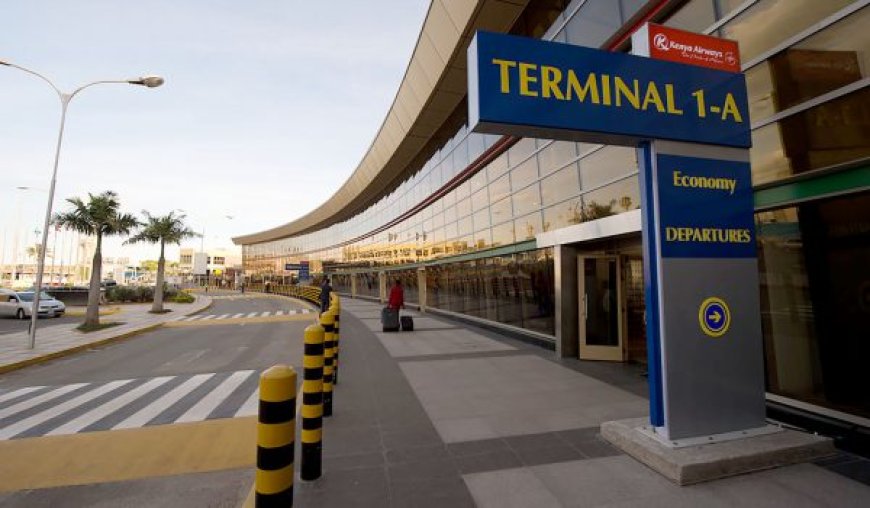Inside Plan For Kenya Airways To Expand To Ghana
The request was made by Roads and Transport Cabinet Secretary Davis Chirchir during a visit to Accra, where he delivered a goodwill message from President William Ruto to President John Dramani Mahama and the people of Ghana.

Kenya has officially asked the Ghanaian government to permit Kenya Airways (KQ) to set up a secondary hub in Accra, aiming to boost air connectivity across West Africa and beyond.
The request was made by Roads and Transport Cabinet Secretary Davis Chirchir during a visit to Accra, where he delivered a goodwill message from President William Ruto to President John Dramani Mahama and the people of Ghana.
“In the spirit of enhancing people-to-people contacts and advancing commercial linkages to strengthen intra-African trade as envisioned under the African Continental Free Trade Area (AfCFTA), I requested H.E. Mahama to consider allowing Kenya Airways to establish a secondary hub in Accra,” stated Chirchir via his X account.
He explained that the proposal supports broader objectives of the AfCFTA agreement, whose secretariat is based in Accra, by aiming to strengthen regional integration and drive economic growth across Africa.
Chirchir highlighted the strong diplomatic and trade relationship between Kenya and Ghana, reaffirming their commitment to deepen collaboration through the Binational Commission Cooperation Framework.

Roads and Transport Cabinet Secretary Davis Chirchir with the President of Ghana, John Dramani Mahama, during a meeting in Accra. /DAVIS CHIRCHIR
Kenya Airways currently serves several West African destinations, including Ghana, Nigeria, Côte d’Ivoire, Sierra Leone, Liberia, Senegal, and Cameroon.
Setting up a secondary hub in Accra, he added, would position Ghana as a major aviation hub in the region, boosting trade, tourism, and investment links between West Africa and the global market. “This strategic hub would enhance Accra’s profile as a regional aviation centre and support economic prosperity in Ghana and the broader Western Africa region,” he added.
What Is A Secondary Hub?
A secondary hub in aviation is an airport that serves as an additional operational centre for an airline, beyond its primary hub. While the primary hub acts as the airline's main base—handling the bulk of flights, connections, and logistics—a secondary hub supports and expands those operations.
It allows an airline to manage more routes, serve different geographic regions efficiently, and reduce dependency on a single location.
Why It Matters To Kenya Airways
For Kenya Airways (KQ), whose current operations are largely centered around Jomo Kenyatta International Airport (JKIA) [NBO] in Nairobi, establishing a secondary hub presents an opportunity to grow its network, improve operational efficiency, and remain competitive in the rapidly evolving African aviation market.
One of the most significant advantages of a secondary hub for Kenya Airways is the ability to expand its network reach. With a secondary hub, KQ can tap into new markets that are either underserved or logistically difficult to reach via Nairobi.
Cities like Kisumu, Mombasa, or even regional capitals like Kigali (Rwanda), Lusaka (Zambia), or Entebbe (Uganda) could serve as ideal locations to connect flights across East, Central, and Southern Africa. This strategy would allow Kenya Airways to operate more direct regional flights without funnelling everything through Nairobi, cutting down travel times for passengers and making the airline more attractive to travellers and cargo clients alike.
A secondary hub also enhances operational flexibility. Relying on a single airport like JKIA comes with risks—think bad weather, congestion, maintenance issues, or political unrest. For instance, if Nairobi becomes unavailable for any reason, KQ's entire operation could be disrupted.
A secondary hub mitigates that risk by offering an alternative base for flights and crew. This added flexibility helps with better aircraft utilisation, smarter crew rotation, and overall smoother day-to-day logistics. In the long run, this could lead to reduced operational costs and higher profit margins.
The move to create a secondary hub also has strong strategic value in terms of competition. Kenya Airways has been losing ground to major regional players like Ethiopian Airlines, which already operates a successful multi-hub strategy across Africa.

Kenya Airways planes at Jomo Kenyatta International Airport. /AFP
Ethiopian uses Addis Ababa as its main hub but supports operations in West and Southern Africa through strategic partnerships and secondary bases. Without a similar approach, Kenya Airways risks falling further behind. A secondary hub gives KQ the ability to compete more effectively, offer similar connectivity, and reclaim some of the market share it has lost.
Beyond internal operations, a secondary hub can help boost Kenya’s tourism and trade sectors. For example, establishing a hub in Mombasa could link the coast directly to Europe or the Middle East, making it easier for tourists to bypass Nairobi entirely and still access world-class beaches, resorts, and cruise connections.
Similarly, a hub in an agricultural or industrial region like Eldoret could facilitate cargo exports of flowers, vegetables, or textiles to foreign markets. This not only strengthens Kenya Airways’ business but also drives broader economic growth in regions outside Nairobi.
Additionally, the development of a secondary hub would lead to job creation and regional economic development. Airports are major economic engines. They generate employment for pilots, ground crews, maintenance technicians, baggage handlers, customs officials, and hospitality workers.
Establishing a new operational centre would stimulate local economies, attract infrastructure investment, and elevate the host city’s status as a transport and trade hub. For Kenya, decentralising aviation growth away from Nairobi supports a more balanced national development agenda.
Challenges
That said, there are challenges Kenya Airways must consider. Building a secondary hub requires significant investment and careful planning. The airline would need to ensure there is enough passenger demand to justify the expansion. Infrastructure—such as runways, terminals, and air traffic control systems—must be up to global standards.
Further, regulatory approvals, both domestically and potentially in foreign countries if the hub is outside Kenya, must be secured. Operational costs must also be managed carefully to avoid straining the airline's already tight budget. Strategic partnerships, perhaps with local governments or private investors, would be key to making the venture sustainable.
Wrapping Up
In conclusion, developing a secondary hub is not just a tactical decision for Kenya Airways—it’s a strategic imperative. It opens up new markets, creates operational resilience, enhances competitiveness, and contributes to national and regional economic development.
While it comes with challenges, the benefits far outweigh the risks if executed with a clear, data-driven plan. For KQ to remain a serious player in African aviation, it must move beyond a Nairobi-centric model and embrace a multi-hub strategy that reflects the geographic and economic realities of the continent.







